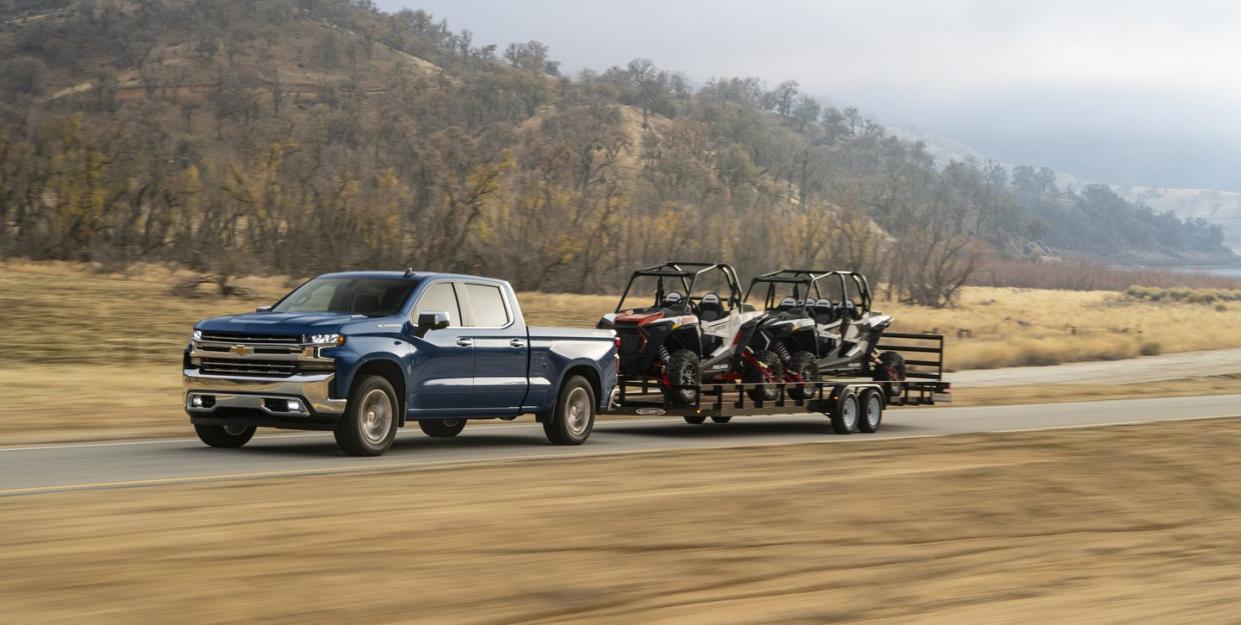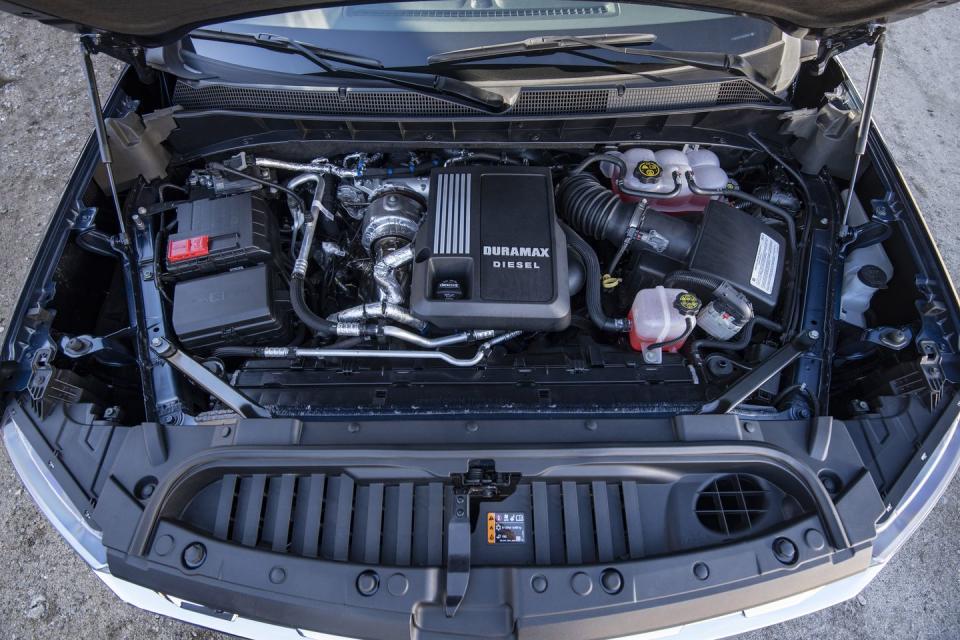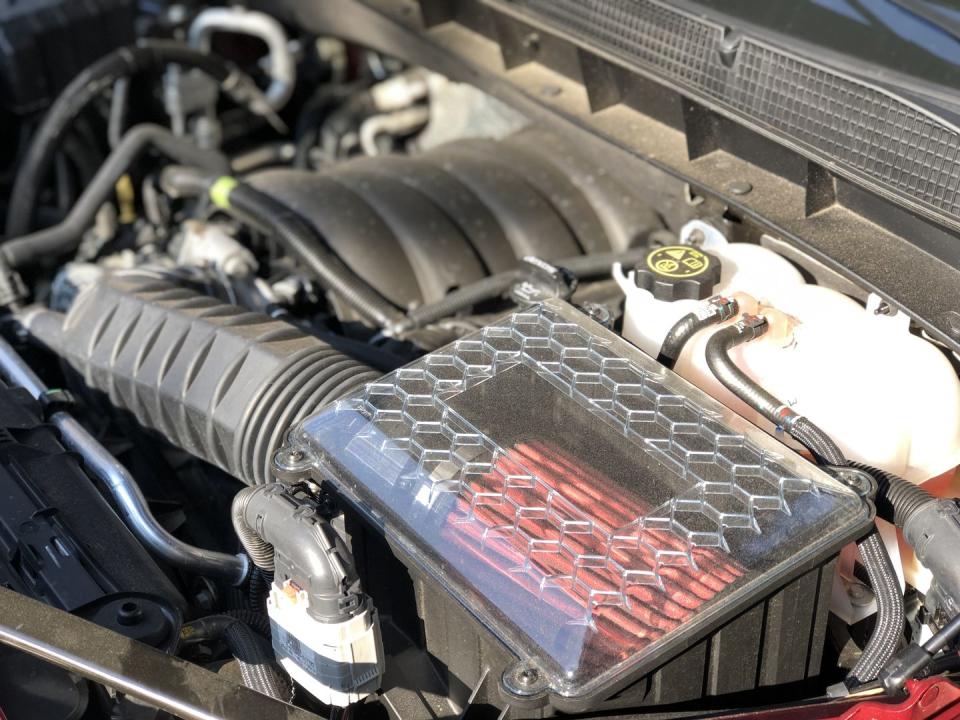The 2020 Chevy Silverado 1500 Offers a Tough Choice: Gas or Diesel?

Engines: 6.2-liter gas V8, 420 hp and 460 lb-ft of torque / 3.0-liter diesel I6, 277 hp and 460 lb-ft of torque Max towing: 13,400 pounds (gas) / 9,300 pounds (diesel) / EPA Fuel Economy / (4x4): 16 mpg city, 20 mpg highway (gas)/ 23 mpg city, 29 mpg highway (diesel) / Price (upgrade over 5.3 V8): $2,495
So, you want a new Silverado, and you’ve got an extra $2,495 to spend on upgrading from the 5.3-liter V8 engine. Well, Chevy (and GMC) have a dilemma for you: for that money, you have your choice of either a 6.2-liter gas V8 or a 3.0-liter Duramax diesel inline six. So which one do you get?
Superficially, the choice comes down to horsepower or fuel economy. A 4x4 with the V8 gets 17 mpg combined, while the diesel gets 25 mpg combined. But the V8 makes 420 horsepower, to the diesel’s 277 horses. So the gas truck is quick and thirsty while the diesel is slower and thriftier, right? Yes, but that’s not all there is to it.

While the big V8 is unquestionably quicker when you’re going wide-open-throttle, the two engines don’t feel wildly different in normal driving. Both engines make plenty of torque—460 lb-ft of it—but the diesel delivers it by 1,500 rpm, while the gas engine needs to rev up to 4,100 rpm. As a result, the smaller six feels effortlessly powerful, while the 6.2-liter always seems to be working harder (because it is).
And this might confound your expectations, but the diesel is smoother than the gas engine. A straight six is inherently balanced, and the diesel’s advanced fuel injection system smothers all but a trace of compression-ignition clatter. The fuel injection system runs at 36,250 psi, with nine-hole injectors delivering fuel up to 10 times per combustion cycle.
With that kind of precision, you can fine-tune not only power output, but noise and refinement as well. The difference between the engines is most noticeable in part-throttle cruising on flat roads, where the diesel is near-silent but the V8 is cutting cylinders, which increases efficiency but results in noticeable changes in both the exhaust note and vibration making its way to the cabin.
Towing is one area where the V8 has a definite advantage, with the 6.2’s tow rating topping out at 13,400 pounds to the diesel’s 9,300 pounds. So if you’re towing the sort of boat or RV that’s in that grey area at the top of a 1500 truck’s tow rating, the 6.2 is the better bet. However, towing at altitude might send the advantage back toward the Duramax, since its turbocharger can compensate for altitude while a naturally aspirated engine will lose power the higher you climb.

One more thing to consider: money. The straight-six and the V8 might cost the same up front, but this is one of the rare cases where the diesel will start saving you money the moment you leave the lot. That’s because the 6.2 requires premium fuel, which is currently at a national average price of $3.17 per gallon. Diesel is at $2.93 per gallon, meaning that over the first 10,000 miles (assuming the EPA combined numbers), the diesel will save you $692.
You’ll need to top off with diesel exhaust fluid every now and then, but that won’t put much of a dent in the diesel’s fiscal advantage. And that’s assuming 4x4 trucks in mixed-use driving. On the highway, the diesel’s even better, with the rear-wheel-drive trucks earning an almost-suspicious 33 mpg.
While we appreciate a scorching 0-60 time and better tow rating as much as anyone, this one’s a no-brainer: if you’re going to step up from the 5.3 in a Silverado, go for effortless torque and extreme economy.
Get the diesel.
You Might Also Like

